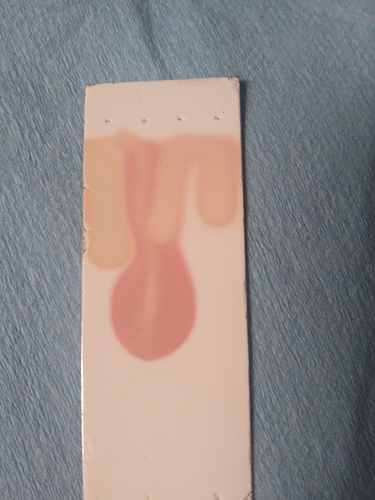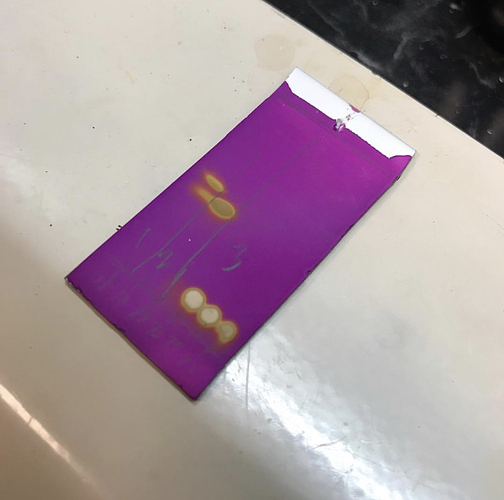for real though I feel like a mental midget around you guys. I am catching up though, i didn’t know shit a month ago
Acidic conditions will concert your CBD over to some isomer of THC.
The added heat from distilling with the clays in there will make a soup of unknowns.
A good experiment would be to monitor the reaction using HPLC, GCMS, or even TLC to see what is going on.
I dream of the day when I can afford to do something like that. Right now our lab is limited to spd and vac oven
edit: TLC seems within reach fiscally. Hrm…
Campbell s carts in the making ![]()
![]()
I don’t like the idea of unknowns there is a lot of unknowns when vaping anything already. No making chemical soup for me. Id rather pay someone for chromatography.
edit: apparently Thin Layer Chromatography looks promising as an analytical method for us due to lack of equipment costs in comparison. So, gotta find out what that makes ![]()
TLC is awesome if there’s only a few compounds in your solution and you have pure samples of each of those compounds. It becomes a little more complex - still possible, but more complex - when you have a lot of compounds and it shows up as a line of marbles.
That’s when you run 2D TLC to see what’s going to degrade and what’s real.
What do you mean degrade? And what’s the alternative to 2D TLC?
If it degrades on silica (aka acidic conditions). So this will give a lot of information about what happens when you treat cannabinoids with acid.
English plz lol
2D TLC?
I swear theres a new term that pops up every day around here
TLC plates I think is what he’s talking about. I just ordered some reversed-phase plates by Analtech for exactly this.
@anon93688 like this, right? This is CBD / mother liquor samples on silica 60 plates. The spots were colorless until maybe 12 hours passed after drying
That sounds like a Google nightmare.
Make sure you search for “TLC Analtech” hahah
(tender lovin’ care)
Lmao the unsuspecting virgin eyes you just saved
That one doesn’t look so good.
This TLC is showing different fractions after chromatography. notice how there is a light spot in the first fraction? If I ran 2D TLC on this using a different gradient I could learn a lot of information.
2D TLC is different in that you run the plate a second time with a 90* rotation. This information is useful since it will tell you if what you are making is stable to the stationary phase on the plate.
Edit: had the wrong TLC plate description.
I know it doesn’t look good ![]()
I lost $2 in plates and maybe $0.20 in solvent. Gained a tiny bit of knowledge. Win.
not trying to put you down. the sample you spotted is overloaded that’s all. you want small spots on the plate so you can see what’s actually going on.
I did varying dilutions using 1:1 Heptane:ethyl acetate on silica 60 phase plates (not a great choice)
This plate looked the best lmao
Anyone ever used 2D GCMS or LCMS? I remember seeing a vendor demo it when I was at an analytical lab. It impressed me quite a bit
They have a great sense of humor about the name too. Adventures of Ana L'Tech - a great Chromatographic Comedy.rv - YouTube

